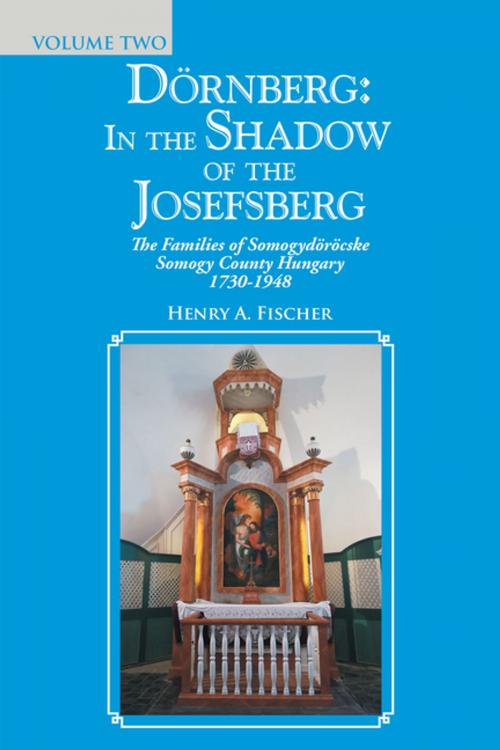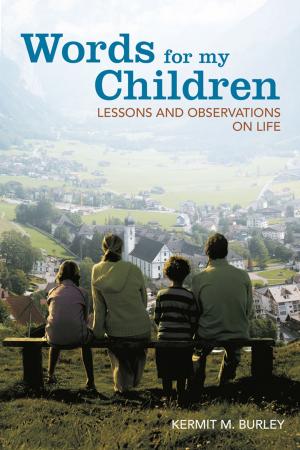Dörnberg: in the Shadow of the Josefsberg
The Families of Somogydöröcske Somogy County Hungary 1730-1948
Nonfiction, Reference & Language, Reference, Genealogy, Religion & Spirituality, Christianity, General Christianity, History| Author: | Henry A. Fischer | ISBN: | 9781546275626 |
| Publisher: | AuthorHouse | Publication: | February 6, 2019 |
| Imprint: | AuthorHouse | Language: | English |
| Author: | Henry A. Fischer |
| ISBN: | 9781546275626 |
| Publisher: | AuthorHouse |
| Publication: | February 6, 2019 |
| Imprint: | AuthorHouse |
| Language: | English |
In the past, the steep, majestic, heavily forested, and somewhat impregnable Josefsberg was the lair of robber bands and brigands following the expulsion of the Turks from the area and all of Hungary. In the future, it would become known as the Jószefhegy. It is one of the highest elevations in northeastern Somogy County. In its lengthening shadow, the village of Dörnberg would emerge in the early decades of the eighteenth century named as such by its German settlers in reference to the abundance of thorns in its lower regions. These first settlers were in large part of Hessian origin, having joined the Schwabenzug (the Great Swabian migration) of the eighteenth century into Hungary at the invitation of the Habsburg emperor Charles VI. The fact that they were Lutherans would lead to decades in which they were forced to exist as an underground congregation until the Edict of Toleration was promulgated by the emperor Joseph II in 1782, which led to the naming of the local heights as the Josefsberg in his honor. It was sometime later that the county administration renamed the village, and it became Somogydöröcske. The village would maintain its German character throughout its history until the end of the Second World War when Protocol XIII of the Potsdam Declaration was carried out on April 6, 1948, and the vast majority of the village population was expelled along with the German families in its affiliates in Bonnya and Gadács and sent by cattle car to the then Russian zone of occupation of Germany. Those from Szil followed a week later. This publication is addressed to the English-speaking descendants of those families that immigrated to Canada, Australia, and the United States prior to the Second World War, as well as the families who were successful in escaping from the Russian zone of Germany to the west and were able to find a new home in English-speaking countries. It provides them with genealogical information about their forebears and additional information regarding their life and history.
In the past, the steep, majestic, heavily forested, and somewhat impregnable Josefsberg was the lair of robber bands and brigands following the expulsion of the Turks from the area and all of Hungary. In the future, it would become known as the Jószefhegy. It is one of the highest elevations in northeastern Somogy County. In its lengthening shadow, the village of Dörnberg would emerge in the early decades of the eighteenth century named as such by its German settlers in reference to the abundance of thorns in its lower regions. These first settlers were in large part of Hessian origin, having joined the Schwabenzug (the Great Swabian migration) of the eighteenth century into Hungary at the invitation of the Habsburg emperor Charles VI. The fact that they were Lutherans would lead to decades in which they were forced to exist as an underground congregation until the Edict of Toleration was promulgated by the emperor Joseph II in 1782, which led to the naming of the local heights as the Josefsberg in his honor. It was sometime later that the county administration renamed the village, and it became Somogydöröcske. The village would maintain its German character throughout its history until the end of the Second World War when Protocol XIII of the Potsdam Declaration was carried out on April 6, 1948, and the vast majority of the village population was expelled along with the German families in its affiliates in Bonnya and Gadács and sent by cattle car to the then Russian zone of occupation of Germany. Those from Szil followed a week later. This publication is addressed to the English-speaking descendants of those families that immigrated to Canada, Australia, and the United States prior to the Second World War, as well as the families who were successful in escaping from the Russian zone of Germany to the west and were able to find a new home in English-speaking countries. It provides them with genealogical information about their forebears and additional information regarding their life and history.















